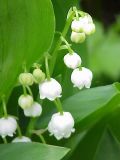House Plant Toxicity
Introduction
Plants are an important part of the interiors of homes. Pets often chew or ingest these plants, which can lead to intoxications.
Age of the pet, boredom, and changes in the surroundings are factors that may affect the incidence of poisoning. Puppies and kittens are very inquisitive, and mouth or chew almost everything. Pets (especially single household pets) of all ages may become bored or restless if left alone or confined for too long at any one time, and chewing on objects for relief is common.
Birds also chew plants, however toxicities are rare as they rarely ingest any material. Also, few plants have been shown to be toxic to birds.
Clinical Signs
Common clinical signs include dermal and oral mucosal irritation and GIT irritation signs such as regurgitation, salivation, vomiting, diarrhoea and anorexia.
Some plants have more serious effects ranging from:
- cardiac signs such as: tachycardia, bradycardia, arrhythmias
- nervous signs such as: convulsions, ataxia, tremors, paralysis
- renal failure
- haemolysis
- death
Common Poisonous Houseplants and Ornamentals
Treatment Considerations
The cardiovascular, respiratory and nervous systems should be assessed and stabilised if necessary.
A capsule history, including details of any suspect plants, should be taken. Also information should be gathered on any other medical conditions the animal is suffering from.
Access to the plant should be prevented.
In the case of skin irritations, the skin should be thoroughly lavaged using isotonic fluids to eliminate any toxins still present on the surface.
If the plant was ingested, further absorption should be prevented by inducing emesis, performing gastric lavage, or administering activated charcoal and cathartics.
Gastroprotectants can then be administered if there is irritation of the gastro-intestinal tract.
Most plant intoxications respond to symptomatic therapy and correction of any fluid and electrolyte imbalances that may occur. The animal usually recovers with no lasting effects. The oral mucosa may have suffered local irritation and tube feeding may be necessary in the first instance.
More serious symptoms such as convulsions and cardiovascular effects should be dealt with appropriately.
| House Plant Toxicity Learning Resources | |
|---|---|
 Test your knowledge using flashcard type questions |
Avian Medicine Q&A 07 |
References
Merck and Co (2008) Merck Veterinary Manual Merial
Boden, E. (1998) Black's Veterinary Dictionnary Rowman and Littlefield
| This article has been peer reviewed but is awaiting expert review. If you would like to help with this, please see more information about expert reviewing. |
Error in widget FBRecommend: unable to write file /var/www/wikivet.net/extensions/Widgets/compiled_templates/wrt680dc29fa2e663_61536657 Error in widget google+: unable to write file /var/www/wikivet.net/extensions/Widgets/compiled_templates/wrt680dc29fa81f50_37989751 Error in widget TwitterTweet: unable to write file /var/www/wikivet.net/extensions/Widgets/compiled_templates/wrt680dc29facf319_79489235
|
| WikiVet® Introduction - Help WikiVet - Report a Problem |



















